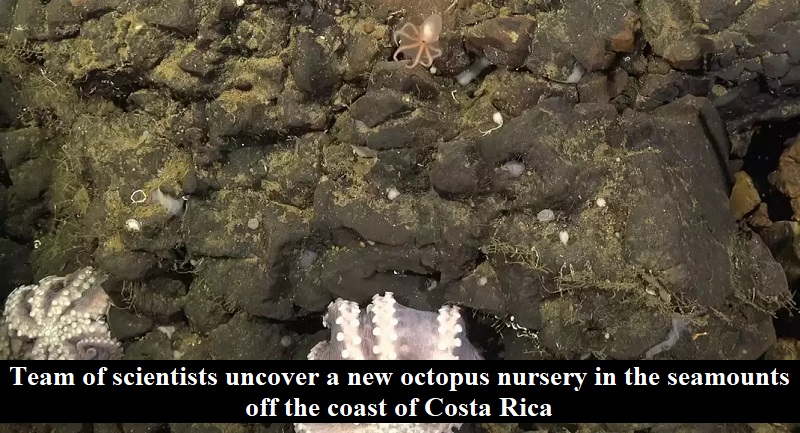
A group of scientists has made an astonishing finding by uncovering a new octopus nursery in the seamounts off the coast of Costa Rica, as reported by Science Alert. They have also confirmed the presence of a previously known nursery in the same area, bringing the total number of documented octopus nurseries worldwide to three.
During a recent expedition on the Falkor research ship operated by the Schmidt Ocean Institute, 18 international scientists captured incredible footage using an underwater camera on a remotely operated vehicle. The footage showcases the hatching of baby octopuses, mothers protecting their young from predators, and potentially even a new species of octopus.
Jyotika Virmani, a physical oceanographer from the Schmidt Ocean Institute, emphasized the significance of this discovery, highlighting the vast amount of knowledge still to be gained about the ocean.
The newly discovered nursery is located at an unnamed outcrop in previously unexplored territory, where brooding octopuses were observed near low-temperature hydrothermal vents at around 7°C (44.6°F).
The researchers speculate that they may have encountered nursing octopuses belonging to a new species within the Muusocotpus genus, which notably lacks ink sacs. While the brooding behavior of deep-sea octopuses remains largely mysterious, previous studies have revealed that one species, Graneledone boreopacifica, broods its eggs for approximately 53 months.
Despite falling within the Muusoctopus genus, the newly observed species has similar-sized eggs to those of G. boreopacifica.
The discovery of these low-temperature vent sites was a challenging task, requiring the use of submersible vehicles like the Schmidt Ocean Institute’s advanced ROV SuBastian, as explained by Beth Orcutt, a geomicrobiologist from the Bigelow Laboratory for Ocean Sciences.
The initial revelation of the Dorado Outcrop nursery had already gained considerable attention, as it marked the first observation of approximately one hundred female octopuses brooding near hydrothermal vents in the Pacific Ocean off Costa Rica.
In 2018, it was confirmed that the Davidson Seamount off the coast of California held the largest known deep-sea octopus nursery.
Initially, no developing embryos were found at the Dorado Outcrop, leading researchers to believe that the environment might be too warm for viable offspring. However, their doubts were dispelled when they were fortunate enough to witness the hatching of the octopus babies.
The expedition not only resulted in the discovery of the nurseries but also involved the exploration of five previously unknown seamounts in Costa Rican waters. Seamounts, shallow areas with steep slopes protruding from the seafloor, are often rich in marine life.
These “underwater mountains” play a role in influencing tides and chemical fluxes between the ocean and the Earth’s crust.
While some seamounts off the coast of Costa Rica have been protected by the government, others, particularly those along the northwest edge of the Pacific Ocean, have received less attention.
The team discovered an abundance of life surrounding these seamounts, with hundreds of animals, potentially including new species like the peculiar tripod fish, awaiting classification. It was as if the scientists had stumbled upon a hidden treasure trove of biodiversity.

Post Your Comments